Which duvet size to choose?
Categories:
Advice
 Choosing the right baby blanket dimensions according to season and age
Choosing the right baby blanket dimensions according to season and age
 How to attach a headboard (with or without drilling): quick and effective soluti
How to attach a headboard (with or without drilling): quick and effective soluti
 Waterproof sheet or mattress protector: the best solution by age group
Waterproof sheet or mattress protector: the best solution by age group
 27 Original, Useful, and Trendy Christmas Ideas for Teens 2025
27 Original, Useful, and Trendy Christmas Ideas for Teens 2025
 Christmas Activities for Baby: Creative Ideas for Home & Daycare
Christmas Activities for Baby: Creative Ideas for Home & Daycare
The bed size alone is not enough to determine the right duvet size, as other factors come into play: the age of the sleeper(s), the number of people in the bed, and each person's build. Add to that your own habits. Indeed, you'll need a larger duvet if you tend to move and roll around in it, than if you fall asleep quietly and remain almost motionless until morning.
Here's our guide to choosing your duvet size correctly.
A duvet that's too small doesn't cover you properly and exposes you to nighttime cold. Conversely, a duvet that's too large falls on each side of the bed. It gives the impression of being too heavy, which disturbs sleep.
There are standard duvet sizes that correspond to bed dimensions, as well as duvet cover sizes. Here are the classic correspondences between duvet size and bed size.
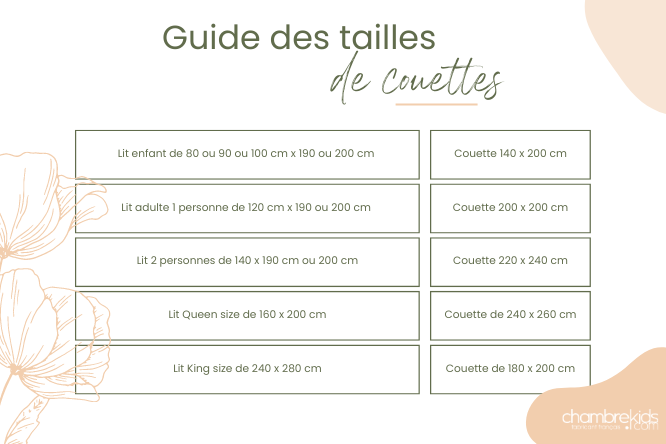
The dimensions of a child's bed are close to those of a single adult bed: 80 or 90 cm wide for a length of 190 or 200 cm. However, it is often lower and a duvet that's too large will end up dragging on the floor. That's why a 140 x 200 duvet is usually sufficient.
However, if your child is of a higher build than average and/or is particularly active during the night, a 200 x 200 cm duvet will be more comfortable for them, as it will prevent them from becoming uncovered.
The standard duvet for a child's bed is 2 meters long, which allows it to cover even the tallest children.
A single adult bed measures 120 cm in width. This is slightly larger than a child's bed, and an adult's build is generally larger than a child's. To have a margin of 30 to 40 cm on each side, a 200 x 200 duvet will provide the best comfort, while a 140 x 200 duvet will seem insufficient to cover you.
The standard duvet for a single adult bed is 2 meters long.
It adequately covers people up to 1.90 meters tall, as you need to consider height without the head emerging from under the duvet.
The 2-meter duvet therefore suits all standard beds, because if you or your partner are taller than 1.90 meters, you should consider a bed that exceeds standard dimensions for your comfort.
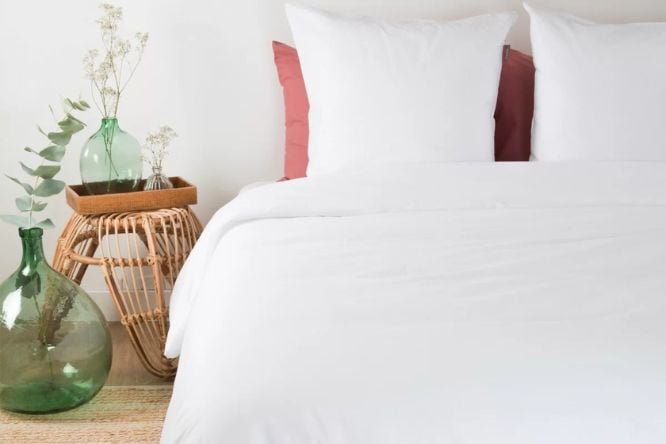
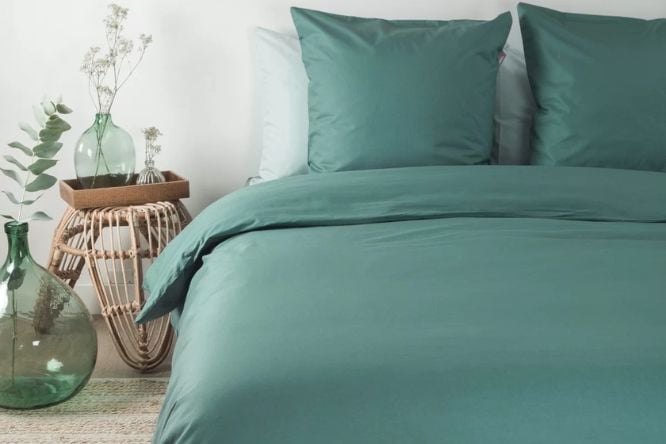
The size of the duvet for an adult bed depends first on the bed dimensions. Refer to the list above to see the correspondences.
However, you must take into account both sleepers' build, as well as their behavior during the night.
If one or both sleepers are larger than average, choose a duvet size larger than what the correspondence list recommends.
Also consider each person's behavior during the night. One person's movements shouldn't uncover the other. If one of you is rather restless during the night or tends to wrap themselves in the duvet, plan for a larger size than necessary to avoid nighttime battles over pulling the duvet.
The convertible bed is a special case, as it follows your child throughout their growth. It assembles as a cradle for the baby's first months, then transforms into a crib, before becoming a child's bed.
The mattress size depends on which stage you're at. You'll need to wait for the "child's bed" phase to buy a 140 x 200 duvet. During the "crib" phase, you need to buy a specific duvet for this type of bedding.
Once you have determined the duvet size for yourself or your child, other questions arise about its nature. Here are our recommendations.
Duvet filling can be natural, meaning made of feathers and down, or synthetic, often polyester-based, but also made from ecological fibers.
Natural filling is synonymous with warmth and comfort. In return, its price is higher. It depends particularly on the percentage of down compared to feathers. The more down in the filling, the higher the cost. Down provides warmth but also enhances the delightful soft sensation.
With 70 to 90% down, you're assured of enjoying a light and velvety duvet. If your duvet contains more feathers and small feathers, it becomes heavier and promotes perspiration when it's warm. Avoid duvets that are too cheap, which are filled with large feathers whose rigid structure you can feel through the cover.
As for feather quality, you have a choice between goose and duck. Goose down is considered more effective, therefore more expensive. However, the eider duck is in a class of its own, as it constitutes the high-end of duvet filling. The down of this Scandinavian duck — a protected species — is patiently collected from its nest when it's absent. This is why an eider down duvet is very expensive.
A duvet with natural filling is robust and designed to last a very long time. However, you must consider two caveats. First, you cannot wash it yourself but must take it to the dry cleaners; secondly, make sure you're not allergic before buying it.
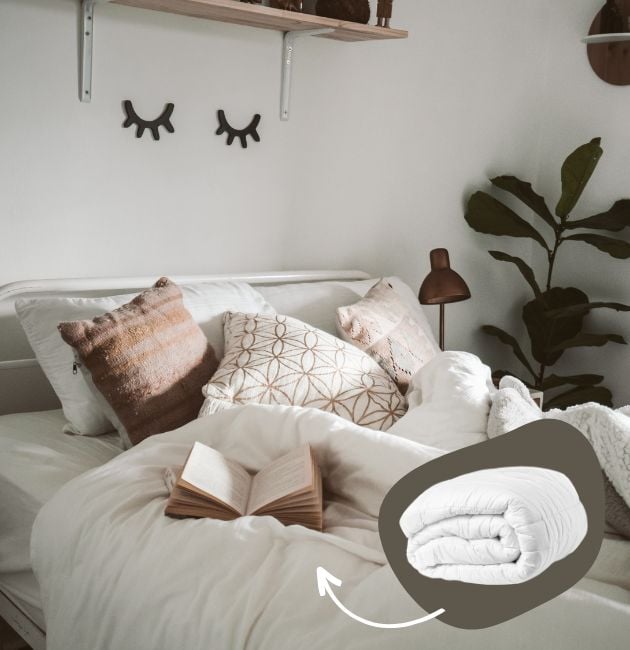
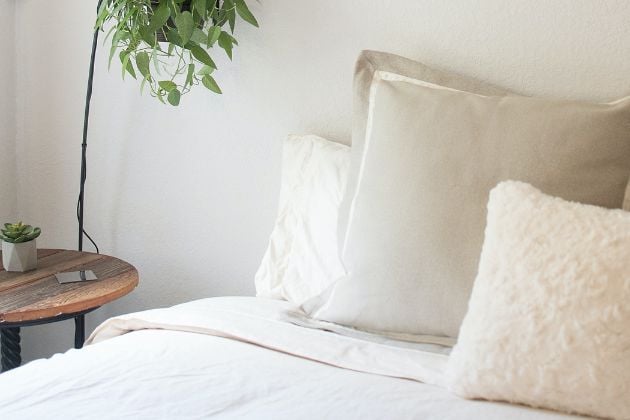
Synthetic duvets now achieve excellent thermal performance. They are less expensive, easy to maintain, and made from hypoallergenic raw materials.
The synthetic duvet is made of polyester fibers and ecological fibers designed to incorporate air, provide insulation, and remain light. Polyester fibers can be combined with natural ecological fibers from cotton or bamboo viscose, for example. There are also very specific ranges of duvets, made from silk or wool.
Comfort will depend on the quality you select. Some fillings are treated with silicone, so the fibers slide over each other as with down. Their comfort thus approaches that of natural-filled duvets.
In addition to the type of filling in your duvet, consider its weight which contributes to the comfort it offers. The ideal is to use a light duvet, nevertheless insulating and with high thermal performance.
Down-filled duvets are the lightest. For example, a duvet filling containing 90% down weighs about 180 g/m² for a summer model and 270 g/m² for a winter model. To achieve an equivalent thermal coefficient, a synthetic duvet filling will weigh 200 to 250 g/m² for a summer duvet and 300 to 450 g/m² for a winter duvet. If you like really warm synthetic duvets, their weight can reach 500 g/m².
There are 4-season duvets which are actually made up of two duvets: one light and one medium-weight. The two duvets have different weights. Depending on the season and room temperature, you use either one or both together:
in summer, only the light duvet;
in autumn, only the medium-weight duvet;
in winter, both the medium-weight and light duvet;
in spring, only the medium-weight duvet.
The quality of the duvet cover is essential. The weave must be robust and well-calibrated to prevent fibers, feathers, or down from escaping.
A duvet with natural filling should have a weave density of 120 to 150 threads/cm². For a synthetic duvet cover, it should exceed 90 threads/cm². This information is not often displayed on duvet labels and notices. However, if you're investing in a quality duvet, don't hesitate to ask your seller who can obtain this information from the manufacturer.
There are anti-mite, anti-bacterial, or anti-bed bug treatments. They apply to both the filling and the duvet cover. In any case, to avoid unwanted guests, wash your duvet cover very regularly, along with all sheets and pillowcases. Wash yourself or dry clean the duvet once a year to ensure perfect hygiene.
